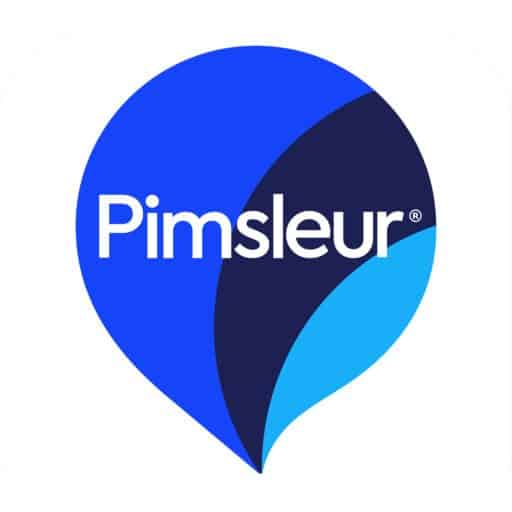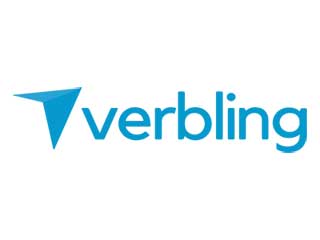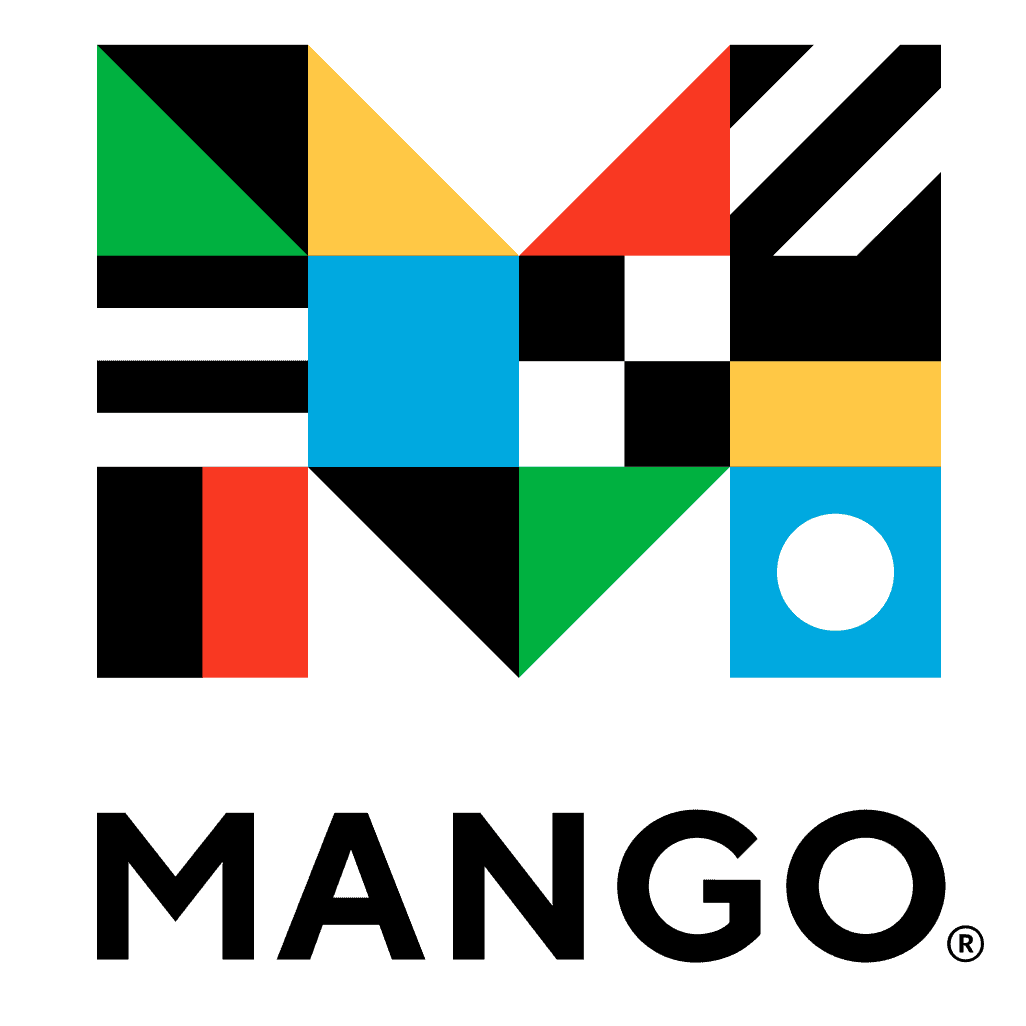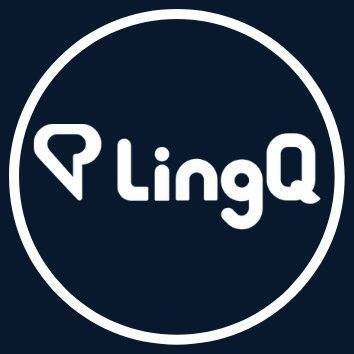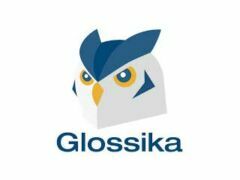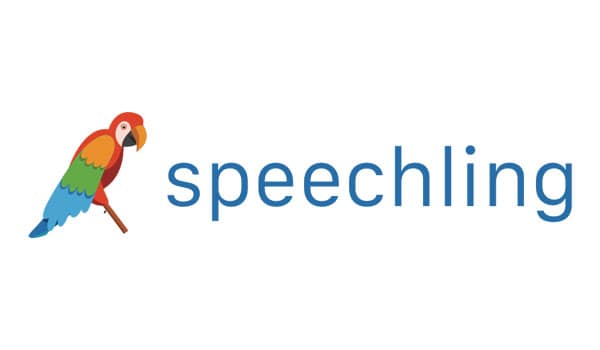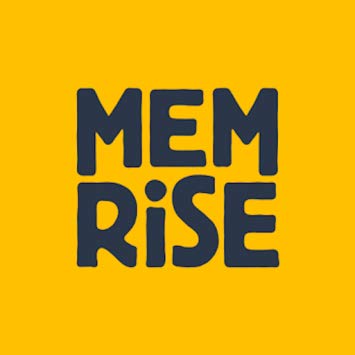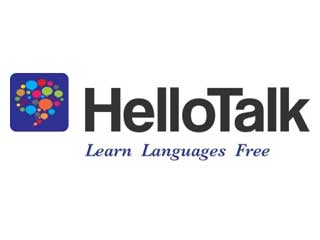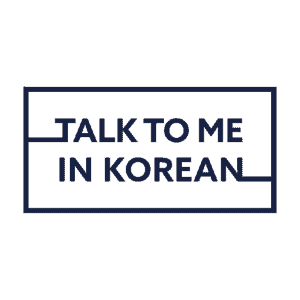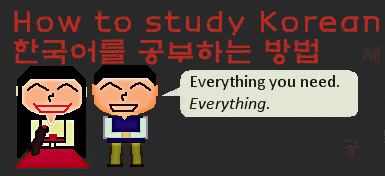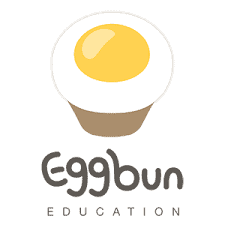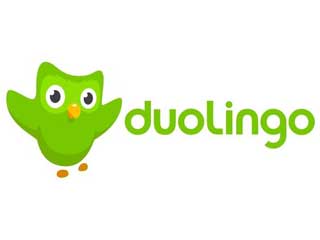Korean culture has captured the hearts of many. From the global phenomenon of K-Pop and its fans from all over the world, showcasing the universal appeal of Korean music and entertainment, the mouthwatering Korean food classics like kimchi and bulgogi that captured the taste buds of millions around the world, up to K-dramas and movies that continues to hook and make Korean culture an irresistible and influential force on a worldwide scale.
There are a lot of reasons to learn Korean, and there are just about as many ways to learn it. Whether you’re looking to enjoy Korean literature, understand K-drama without subtitles, or simply engage more deeply with the culture, there’s a course that will provide you with the tools and knowledge you need to achieve your goal. With the extensive selection available, there’s a course that will fit your budget, learning style, and goals.
Let’s dive in!
Table of Contents
Table of Best Courses to Learn Korean
Links below will send you to the course websites, and the course details are down below.
OVERALL BEST
A Quality Course with Straightforward Instructions: 90 Day Korean
Well-Structured Audio Lessons for Aural/Verbal Learners: Pimsleur
Best for Picking Your Own Class: Verbling
BEGINNER’S COURSES
Best Beginner Course with Engaging Stories: Korean Uncovered
Thorough and Gamified Introductory Course: Lingodeer
Phrase-Based Practice for Beginners: Mango Languages
READING AND LISTENING
Tons of Listening Practice: KoreanClass101
Read Your Favorite Content: LingQ
Pricey but Serves a Purpose: Glossika
SPEAKING AND WRITING
Best for Speaking Korean from Day 1: Pimsleur
POV-Style Conversation Practice: Teuida App
Good for Intermediate Students Wanting to Practice Speaking: Glossika
Best for Improving Korean Pronunciation: Speechling
VOCABULARY ACQUISITION
A Quality Course with Straightforward Instructions: 90 Day Korean
Phrase-Based Learning with Lots of Grammar Practice: Assimil
Free Flashcard Platform and Official Korean Courses: Memrise
TUTORS AND LANGUAGE EXCHANGES
Tutoring Help for a Range of Ability Levels: italki
Great Way to Find Tutors and Classes: Verbling
Best Way to Find Language Exchange Partners While Taking Its Audio Lessons: HelloTalk
Overall Best Korean Learning Courses
Welcome to our carefully curated list of our favorite Korean courses. In this section, you’ll find the most comprehensive and effective courses designed to help you embark smoothly on your journey toward Korean language fluency.
A Quality Course with Straightforward Instructions
At first glance, this may seem too good to be true. After all, no one’s going to become fluent in 90 days, right? Luckily, this course isn’t promising the impossible. Instead, it breaks the overwhelming goal of learning Korean into four 90-day modules. This more manageable timeline makes for a less intimidating study plan and can do great things for daily motivation.
The modules in this course do an excellent job of providing in-depth coverage of grammar and vocabulary concepts. The lessons are presented one week at a time, though you can proceed to the next week’s material whenever you feel comfortable doing so.
The course benefits from straightforward explanations and challenges that push you to apply what you’ve learned in practical situations. For a higher subscription price, there’s the option to have access to coaching, which means you’ll get feedback from a Korean tutor as you progress through the course.
Pros
- Explanations are clear and easy to understand
- Challenges give you the opportunity to use what you’ve learned
- Great course structure
Cons
- There are less expensive options
See our Super-Detailed 90 Day Korean Review
Well-Structured Audio Lessons for Aural/Verbal Learners
Pimsleur is one of the most popular and longest-standing resources out there for learning a foreign language. Its courses place a strong emphasis on aural and verbal communication skills, which is ideal for Korean learners who want to start speaking quickly.
Pros
- The lessons are structured well and are an appropriate length.
- There are both male and female native speakers.
- Lessons build on each other nicely.
- The platform is easy to navigate and visually appealing.
Cons
- There’s very little visual content.
- Lesson speed isn’t customizable.
See our Super-Detailed Pimsleur Korean Review
Best for Picking Your Own Class
Verbling is an online language-class marketplace where you can take lessons with teachers of your choice. It has some student-friendly extra features, including a built-in online classroom, flashcards, homework calendar, and a filing system for lesson materials. There are also useful but disorganized forums where you can discuss languages, share writing for critique, and do free language drills and exercises.
The lessons are generally high quality and well structured, plus the filters make it easy to find teachers who specialize in everything from accent reduction to interview preparation.
Pros
- You can quickly find great teachers
- The platform’s extra features, such as teacher-made, personalized flashcards, help you review the material learned in each lesson.
- It seems focused on long-term progression as well as immediate student satisfaction.
- You don’t have to give out your contact details, thanks to the classroom technology.
Cons
- Some teachers don’t use the platform’s flashcards and materials system.
- There are fewer languages available than on italki.
- You can only pay in US dollars, plus there’s a hidden fee.
- The forums need more moderation.
See our Super-Detailed Verbling Review
Best Korean Beginner’s Courses
Explore our handpicked selection of the best Korean beginner’s courses, the perfect starting point for your Korean language journey. These courses are tailored to ease you into the language and provide you with a solid foundation in Korean.
Best Beginner Course with Engaging Stories
StoryLeaning Korean Uncovered comes from Olly Richards, the creator of the super popular polyglot blog. It’s quite a bit different than most courses as it revolves around an engaging story. It can be a bit more challenging than other courses, as you begin reading somewhat long texts right off the bat. Overall, I found it to be a more fun way to approach language learning that will be great for some but not ideal for others.
Pros
- Centering the lessons around a story makes learning more fun.
- Good clear instruction with lots of opportunities to practive what you’ve learned.
- Gets students to actively participate and take control of their own learning.
Cons
- Too many unrelated grammar points are included in the grammar lessons.
- The review quiz is too short.
See our Super-Detailed StoryLearning Korean Review
Thorough and Gamified Introductory Course
There’s certainly no shortage of language-learning apps out there, but Lingodeer stands out in terms of quality. This is especially true for Asian languages like Korean, which are often neglected by other popular apps.
Lingodeer combines gamification and app-friendly, convenient practice with a well-structured course to provide something truly valuable. Lessons build on each other nicely, and it’s a great place to get a solid foundation in Korean. Interactive practice activities test how much you’ve retained from the lessons and keep things interesting.
Keep in mind when considering Lingodeer that there isn’t as much material available for advanced learners. It’s also probably not the best place to improve your conversational skills.
Pros
- Great for engaging, convenient practice
- Well-structured lessons
Cons
- Not much practice for learners past the intermediate level
- You’ll need to look elsewhere to fully develop conversational skills
See our Super-Detailed Lingodeer Review
Phrase-Based Practice for Beginners
If you aren’t afraid of a little language drilling — okay, a lot of drilling — Mango Languages could be worth checking out. It won’t be very useful to learners beyond the intermediate level, however, as there’s just not much in the way of advanced content.
The design of the Mango Languages app is appealing and makes for more enjoyable practice, and you’ll be exposed to lots of Korean phrases. Learning new words this way is helpful in getting used to the way the language works in context and how to use it yourself.
Lessons build on each other nicely and will provide you with loads of speaking practice by prompting you to repeat what you hear. This is something that could become overly repetitive for some. You also won’t get in-depth grammar practice or explanations here.
If you’re interested in Mango Languages, be sure to check whether it’s available for free in a public library near you.
Pros
- The design is appealing and easy to use
- There are useful cultural notes
- Learning full phrases will help you understand common language structures
Cons
- There isn’t much in-depth grammar practice
- Phrase drilling can become overly repetitive
- Learners at higher levels will have to look elsewhere
See our Super-Detailed Mango Languages Review
Courses to Learn Korean Reading and Listening
In this section, we have carefully picked courses that focus on honing your Korean reading and listening skills. These courses are tailor-made to help you become a more adept and confident reader and listener of the Korean language.
Tons of Listening Practice
It wouldn’t be easy to find another resource with as much listening material as you’ll find with KoreanClass101. There are thousands of listening lessons here, and they’re accompanied by transcripts, quizzes, extra notes, and some videos.
While the amount of content is certainly a good thing, there is a lack of clear structure to the course. This might be nice if you’re the type of learner that likes to skip around as you please, but some might end up feeling lost and without enough guidance.
The bulk of the huge lesson library is most-suitable for learners at the beginner to pre-intermediate levels — advanced learners won’t find as much relevant practice material. This is also probably not the best resource if you’re looking for a course to really strengthen your speaking or writing skills.
Pros
- There is a great deal of listening content for learners at the beginner and intermediate levels
- Accompanying lesson notes are useful
Cons
- There isn’t as much content for advanced learners
- There isn’t a clear course structure
- It isn’t the right place to get speaking, writing, or advanced practice
See our Super-Detailed KoreanClass101 Review
Read Your Favorite Content
LingQ is a language-learning platform that focuses on extensive reading for over 30 different languages. You can import your own content or choose from the community library of books, articles, podcasts, YouTube videos, and more.
The app highlights unknown words across every lesson and makes them reviewable via different types of SRS flashcards. The more you read, the more accurately you will be able to identify content that is suitable for your level.
Pros
- I can easily import almost any material I want to study.
- I can use SRS flashcards to quiz new words from a specific page.
- Each lesson in the library displays the percentage of known and unknown words based on my reading history.
- There are many dictionaries to choose from for definitions.
Cons
- Reviewing words is chaotic. Every word you look up gets added to a huge queue that quickly becomes unmanageable.
- The extra features are overpriced and can be found other places for cheaper.
- Very little of the content is original. Much of it was uploaded by users from other places.
- The free version is extremely limited.
See our Super-Detailed LingQ Review
Pricey but Serves a Purpose
Glossika has learning resources for over fifty languages that impressively range from Armenian and Czech to Icelandic and Tagalog. While not suitable for absolute beginners, lower intermediates could use the resource to familiarise themselves with sentences in their language of choice using Glossika´s intuitive approach. Listening to native speakers and repeating what they say can help learners to improve their comprehension skills and spoken fluency. While it is amazing that so many languages are included, learners would have to use numerous other resources alongside it. The cost is unjustifiably high.
Pros
- There are lots of languages available, including many that are rarely covered by other resources.
- The subscription gives you access to all of the languages making it possible to study one language and review another at the same time.
- It will force you to speak the language which will improve your confidence and prosody.
Cons
- As all of the languages cover the exact same material, the diversity of the languages and cultures are reduced to a simple formula with no cultural context involved in their teaching.
- There are a fair amount of errors in the materials.
- The cost is excessively high compared to other resources.
- There are no explanations of grammar.
See our Super-Detailed Glossika Review
Courses With Korean Speaking and Writing Emphasis
This section is dedicated to courses that place a strong emphasis on developing your Korean speaking and writing skills. The courses below are designed to empower you to communicate effectively and express yourself with confidence in both spoken and written Korean.
Best for Speaking Korean from Day 1
Pimsleur is one of the most popular and longest-standing resources out there for learning a foreign language. Its courses place a strong emphasis on aural and verbal communication skills, which is ideal for Korean learners who want to start speaking quickly.
Pros
- The lessons are structured well and are an appropriate length.
- There are both male and female native speakers.
- Lessons build on each other nicely.
- The platform is easy to navigate and visually appealing.
Cons
- There’s very little visual content.
- Lesson speed isn’t customizable.
See our Super-Detailed Pimsleur Korean Review
POV-Style Conversation Practice
Teuida isn’t your standard language resource. It’s full of super engaging conversation practice where you take part in POV-style videos, responding when prompted. You’ll find yourself in a variety of situations and will be tasked with responding in real-time to your video conversation partner.
Lessons in Teuida build on each other nicely, and each culminates with a video conversation that tests what you’ve learned in the corresponding unit. This type of practice is highly interactive and is great for building speaking confidence. It could be especially useful for learners that are intimidated by the prospect of speaking to real people at their current level.
While Teuida is fun to use and provides good listening and speaking practice, it won’t teach you much grammar or how to read and write. It’s also not a very good option for learners that are beyond the beginner stage.
Pros
- Video conversation practice is highly engaging
- You’ll get practice with realistic, practical language
- It provides lots of speaking practice
Cons
- There isn’t material for intermediate and advanced learners
- You won’t get in-depth grammar practice or learn to read and write
- Review opportunities are limited
See our Super-Detailed Teuida App Review
Good for Intermediate Students Wanting to Practice Speaking
Glossika has learning resources for over fifty languages that impressively range from Armenian and Czech to Icelandic and Tagalog. While not suitable for absolute beginners, lower intermediates could use the resource to familiarise themselves with sentences in their language of choice using Glossika´s intuitive approach. Listening to native speakers and repeating what they say can help learners to improve their comprehension skills and spoken fluency. While it is amazing that so many languages are included, learners would have to use numerous other resources alongside it. The cost is unjustifiably high.
Pros
- There are lots of languages available, including many that are rarely covered by other resources.
- The subscription gives you access to all of the languages making it possible to study one language and review another at the same time.
- It will force you to speak the language which will improve your confidence and prosody.
Cons
- As all of the languages cover the exact same material, the diversity of the languages and cultures are reduced to a simple formula with no cultural context involved in their teaching.
- There are a fair amount of errors in the materials.
- The cost is excessively high compared to other resources.
- There are no explanations of grammar.
See our Super-Detailed Glossika Review
Best for Improving Korean Pronunciation
Speechling is a website and app that makes it easy to improve your speaking skills in several languages. The free version is an incredbily valuable resource that makes it easy to practice mimicking native speakers. The Unlimited Plan provides unlimited corrections of your recordings by a teacher.
Pros
- An excellent method to improve your speaking abilities and get feedback from a real teacher.
- Answer the Question, Describe the Image, and Freestyle mode are great for higher levels.
- You can switch languages at any time. I like seeing translations in my second language while studying my third language.
- Truly unlimited recordings with quick feedback.
Cons
- Absolute Beginners should learn the basics elsewhere first.
- You’ll need to learn how to make the sounds of your target language on your own.
- The amount of time given to record sentences can be too short.
See our Super-Detailed Speechling Review
Learn Korean Vocabulary and Grammar
This section focuses on courses that focuses on enriching your Korean vocabulary and grammar. Whether you’re aiming to expand your word bank or enhance your grasp of grammar, these courses provide the tools and knowledge necessary to help you on your language learning journey.
A Quality Course with Straightforward Instructions
At first glance, this may seem too good to be true. After all, no one’s going to become fluent in 90 days, right? Luckily, this course isn’t promising the impossible. Instead, it breaks the overwhelming goal of learning Korean into four 90-day modules. This more manageable timeline makes for a less intimidating study plan and can do great things for daily motivation.
The modules in this course do an excellent job of providing in-depth coverage of grammar and vocabulary concepts. The lessons are presented one week at a time, though you can proceed to the next week’s material whenever you feel comfortable doing so.
The course benefits from straightforward explanations and challenges that push you to apply what you’ve learned in practical situations. For a higher subscription price, there’s the option to have access to coaching, which means you’ll get feedback from a Korean tutor as you progress through the course.
Pros
- Explanations are clear and easy to understand
- Challenges give you the opportunity to use what you’ve learned
- Great course structure
Cons
- There are less expensive options
See our Super-Detailed 90 Day Korean Review
Phrase-Based Learning with Lots of Grammar Practice
Assimil is a French company that has been selling language-learning resources since 1929. Assimil materials are available as books, CDs, and downloadable e-courses; there are a variety of available course types, and instruction is based on interacting with phrases in the target language. The popular Sans Peine or, With Ease, courses are for absolute or false beginners that would like to reach the B2 level, but we think you’ll need to incorporate some other study materials to make this happen.
Pros
- The audio quality is great.
- The culture notes add a lot of value.
- There are plenty of grammar explanations, but they aren’t a focus.
Cons
- The mobile app isn’t super intuitive.
- The pronunciation feedback method could be better.
- The exercises aren’t especially engaging.
See our Super-Detailed Assimil Review
Free Flashcard Platform and Official Korean Courses
This incredibly popular resource helps users learn languages largely through its Spaced Repetition System (SRS) and flashcards. Part of the reason it’s so popular is that much of the material is free to use. Anyone can create their own flashcard decks on Memrise, and these user-created courses are totally free to use.
The quality of the courses varies, but you’ll be able to find tons of different topics to study, such as Korean slang, the 1000 most common Korean words, grammar concepts, and more. While all of these courses benefit from SRS, some will have audio, pictures, words, and example sentences, while others will only have some of these.
If you’re looking for material that will reliably be of higher quality, you’ll want to check out the official Memrise courses. These include quality audio, pictures, and even some videos, but you’ll have to pay a subscription fee to get full access.
Pros
- SRS is great for efficient practice
- Practice is enjoyable
- There’s a great deal of available content
Cons
- You’ll need more than Memrise to learn to communicate effectively in Korean
- The quality of user-created courses may vary
- The premium version doesn’t offer much more than the free version
See our Super-Detailed Memrise Review
Tutors and Korean Language Exchange
Discover Korean courses, classes, and lessons that provide access to tutors and Korean language exchange opportunities that will give you a personalized and interactive learning experience. Tutors offer tailored lessons, and language exchange partners provide conversational practice with native speakers. Connect with knowledgeable tutors and language partners to enhance your speaking, listening, and cultural understanding.
Tutoring Help for a Range of Ability Levels
italki is the most flexible and affordable place to find a tutor for the language you’re learning. They have a huge number of teachers offering classes to students of over 100 different languages. As a learner, you’ll be able to find a tutor that best fits your learning style, schedule, and personality. Teachers are able to set their own prices and make their own schedule.
Pros
- There are large numbers of teachers available even for less common languages.
- You can find skilled teachers even at low prices.
- The flexibility to schedule lessons whenever convenient. The huge number of teachers guarantees you’ll find someone to fit your schedule.
- The extra features in the italki Community make it easy to ask questions, get your writing checked, and find a free language exchange partner.
Cons
- Community features are only available through the app.
- You may need to try several tutors before finding one that fits your learning and personality style.
- It’s easy to not take classes as often as you should.
See our Super-Detailed italki Review
Great Way to Find Tutors and Classes
Verbling is an online language-class marketplace where you can take lessons with teachers of your choice. It has some student-friendly extra features, including a built-in online classroom, flashcards, homework calendar, and a filing system for lesson materials. There are also useful but disorganized forums where you can discuss languages, share writing for critique, and do free language drills and exercises.
The lessons are generally high quality and well structured, plus the filters make it easy to find teachers who specialize in everything from accent reduction to interview preparation.
Pros
- You’ll quickly find great teachers.
- The platform’s extra features, such as teacher-made, personalized flashcards, help you review the material learned in each lesson.
- It seems focused on long-term progression as well as immediate student satisfaction.
- You don’t have to give out your contact details, thanks to the classroom technology.
Cons
- Some teachers don’t use the platform’s flashcards and materials system.
- There are fewer languages available than on italki.
- You can only pay in US dollars, plus there’s a hidden fee.
- The forums need more moderation.
See our Super-Detailed Verbling Review
Best Way to Find Language Exchange Partners While Taking Its Audio Lessons
HelloTalk is a mobile app for language learners interested in language exchange. It facilitates communication between native speakers and those learning their language with the use of built-in language tools. It also offers audio lessons in 10 languages as part of a separate subscription.
Pros
- It’s exciting to practice communicating with real people
- The built-in language tools are helpful
- It’s easy to pick up and put down whenever you like
Cons
- It’s too easy to rely on google translate
- It can be hard to find good partners
- The paid audio lessons probably aren’t worth it
See our Super-Detailed HelloTalk Review
Maybe Try These Korean Learning Courses
In case you haven’t found your favorite yet or you just want to diversify your learning experience, below are Korean classes, lessons, and courses that did not make it to our top favorites but may pique your interest and might work well with your learning style.
Live Lingua
Live Lingua is an online language school that connects learners of 11 different languages with teachers for one-on-one or group classes. It stands out from similar resources like italki or Verbling by taking more of a personalized approach: by registering with the platform, you’ll be assigned your very own class coordinator who will pair you with a teacher that best fits your needs. This teacher will develop a curriculum to help you achieve your personal language goals.
The three types of lessons currently available are standard Korean, exam prep, and group lessons. The exam prep lessons are the most expensive, and you’ll have to get in touch with Live Lingua to get the group lesson price.
While there are cheaper ways to take live lessons online, Live Lingua could be worth the price if you want a dedicated teacher that understands your goals, past experiences, and learning style. Some potential downsides are that you’ll have to use a third-party video call platform for lessons and that scheduling happens via email.
See our Super-Detailed Live Lingua Review
Assimil
Assimil is a French company that has been selling language-learning resources since 1929. Assimil materials are available as books, CDs, and downloadable e-courses; there are a variety of available course types, and instruction is based on interacting with phrases in the target language. The popular Sans Peine or, With Ease, courses are for absolute or false beginners that would like to reach the B2 level, but we think you’ll need to incorporate some other study materials to make this happen.
See our Super-Detailed Assimil Review
Udemy
Udemy is a platform with online courses in every subject, and there’s a fair amount of Korean content available. The quality of content you’ll find on Udemy varies significantly from course to course since anyone can add a course. However, that does also lead to some interesting and unique options you won’t find elsewhere. Not surprisingly though, the majority of courses are aimed at beginners in the language.
Be sure to check through the reviews and watch any sample lessons before making a purchase.
Rosetta Stone Korean
Rosetta Stone is one of the most well-known resources for learning languages. It takes an immersive approach to teaching and is widely used by corporations and individuals alike. High levels of repetition and an absence of translations or explanations are hallmarks of the course. A Rosetta Stone course could be most suitable for learners who don’t mind repetitive exercises and prefer to learn from pictures and context rather than translations and explanations. It’s probably not a good option for anyone wanting to significantly improve their speaking or writing skills, or those looking for an engaging course.
ALR Readers Exclusive Holiday Deal!! Get the Lifetime Subscription for 25 languages for $179 (everywhere else it’s $199 right now!). See details on the website.
See our Super-Detailed Rosetta Stone Korean Review
Best Free(mium) Courses for Learning Korean
Explore affordable and free Korean courses in this section. Our Bargain Basement offers budget-friendly and no-cost options to begin your Korean language journey without breaking the bank.
Comprehensive Video Lessons
The Cyber University of Korea (CUK) offers an impressive amount of thorough content for free. Material is presented in the form of free video lessons that are accessible through a number of video platforms, including YouTube.
There are four levels of lessons in the CUK library. The first two levels deal largely with basic communication skills related to everyday activities, and levels three and four teach casual conversation skills. By completing level four, CUK hopes students will be able to achieve a 3.5 score on the Test of Proficiency in Korean (TOPIK).
Many of the lessons include teachers, slides, animations, and dialogues, and you’ll get pronunciation practice by responding to speaking prompts. The material in the third and fourth levels of the CUK course are slightly less engaging, as they don’t include animations or images, but there’s a lot of learning to be had here for free.
Pros
- Lots of free content
- Video lessons are especially engaging at lower levels
- Instruction is clear and well thought out
- It’s especially good for beginners
Cons
- Lessons at higher levels aren’t quite as engaging
Entertaining, Free Practice
Since 2009, Talk To Me In Korean (TTMIK) has offered both free and paid content to Korean learners that is often engaging, fun, and entertaining. The main educational content revolves around grammar concepts presented in audio lessons, but there are also some video lessons. Additional practice involves sentence-building and learning various idiomatic expressions.
TTMIK usually does a great job of striking a balance between educational and entertaining, and the assortment of interviews and drama breakdowns are great for learners looking for learning material that’s more lighthearted.
It’s worth noting that their content occasionally strays too far into entertainment, providing less educational value as a result. You also might not find as many opportunities to put what you’ve learned into practice with this resource. That said, it’s hard to beat the amount of material that’s available for free here.
Pros
- There’s a ton of free content
- Lessons are more entertaining than many alternatives
Cons
- Some lessons focus more on entertainment than educational value
- There aren’t many opportunities to practice what you’ve learned
See our Super-Detailed Talk To Me In Korean Review
A Thorough Guide for Beginner and Intermediate Learners
With 175 in-depth Korean lessons, each accompanied by audio recordings, grammar explanations, and quizzes, How To Study Korean is a resource with enough material to keep you busy for quite some time. Its fairly academic approach may not appeal to those that prefer gamified, interactive practice, but the price tag isn’t likely to turn anyone away.
At the beginner level, lessons come with YouTube videos that provide extra sentence practice as well as dictations and reading practice. There are also additional materials available for purchase at each level. These include workbooks, vocabulary lists, short stories, and more. Each lesson includes 20 or 30 vocabulary words that have all been placed into Memrise decks, making for super-efficient practice. Another benefit of this course is that the materials at lower levels offer instruction in a number of different languages.
Pros
- Lots of free content
- Thorough grammar explanations
- Vocabulary is available for practice in Memrise
- Instruction is available in multiple languages
Cons
- It isn’t the best option for those looking for interactive, gamified practice
- The grammar explanations may be too in-depth for some
Learn Korean with a Chatbot
If you’re looking for a unique, casual way to learn Korean, Eggbun certainly fits the bill. Practice takes place in short lessons where you chat with Lanny, an enthusiastic, animated egg bun. It’s cheeky, fun, unintimidating, and contains a surprising amount of content.
The format may be bizarre, but the content is of pretty high quality and covers multiple aspects of the language. Absolute beginners will be able to start with learning Hangul and will be typing it by the end of the first lesson. The course also includes cultural notes, dialogues, and interactive exercises like multiple-choice questions, role plays, and fill-in-the-blank activities.
This app is mostly useful for beginners, but lesson topics are varied and provide a wide range of quality information. You’ll get to experience both formal and casual Korean while learning about pronunciation, verb conjugations, and more.
Pros
- It’s got a great design and is fun to use
- It’s a good option for those that prefer more casual study
- There’s a variety of practice activities
Cons
- It doesn’t have as much useful material for more advanced learners
- Some learners may not enjoy the chat-based learning format
- The premium subscription is more expensive than alternatives
Most Useful Free Flashcard Vocab Builder
It is the go-to app for free (except on iOS) Spaced Repetition System (SRS) flashcards. It has a simple user interface with various features that more hard-core users can dive into if they choose. Your flashcards will appear according to your natural forgetting curve; the app will test you in increasingly spaced out intervals, with more difficult cards appearing more than once in a session, while easier cards spacing out over weeks — or even months and years.
An SRS system is the most effective way to drive information into your long-term memory. The cards can sync between the web, desktop app, and mobile versions to keep your flashcards updated and with you at all times. You can add images and audio clips to your cards and change the text formatting (if you use it on your computer).
One feature unique to Anki, as opposed to other SRS flashcard apps, is the “Cloze deletion” function, which allows you to block out parts of your card and create a “fill-in-the-blanks” type card format. If you want a resource for how to make effective flashcards, check out the book, FluentForever. The author leaves a whole section dedicated to understanding how to use your Anki deck to advance your skills quickly.
Pros
- Offers a wide range of features.
- Allows synching across multiple devices.
Cons
- Anki’s interface may be a bit intimidating for beginners.
- The aesthetic isn’t very appealing
See our Super-Detailed Anki Review
Dated, but Free and Thorough Courses
The Foreign Services Institute (FSI) has developed a number of language courses, including for Korean. These courses were originally developed several decades ago and were designed to help get diplomats to a professional working proficiency in a language as quickly as possible.
Given their origin, the FSI language courses definitely err on the dry side of things and are far from the most engaging options out there. They consist of PDF scans of typewritten pages and come with accompanying audio. If you can get past the lack of color, pictures, and games, however, you’ll find yourself with an extremely thorough course. It’s worth noting that you won’t get exposure to the most modern Korean usage, but it should still provide you with a fully usable foundation.
Pros
- Well-structured, comprehensive courses
- They’re free
Cons
- Courses aren’t very engaging
- The material is dated
Dated, but Free and Thorough Courses
Courses created by the Defense Language Institute (DLI) are similar in that they’re exceptionally thorough but also dated. One difference between the two is that the DLI courses have a slight emphasis on military terms at higher levels.
Pros
- Well-structured, comprehensive courses
- They’re free
Cons
- Courses aren’t very engaging
- The material is dated
See our Super-Detailed DLI Review
Convenient, Gamified Practice for Beginners
Duolingo is a super popular free language-learning app. It’s available for desktop as well as mobile and offers over 90 different language courses in over 20 different languages — there are currently 35 languages with English instruction. The Duolingo approach is gamified and easy to use, but the bite-sized lessons don’t offer much in the way of in-depth practice. The Duolingo tag line is “Learn a language in just five minutes a day.”
Pros
- The short lessons are ideal for quick, convenient practice
- The game-like features make the exercises engaging and fun
- The community aspect is motivating
Cons
- There’s no opportunity to create your own sentences
- Grammar instruction isn’t part of the lessons
- Text-to-speech audio is sometimes low quality
See our Super-Detailed Duolingo Review
So, What is the Best Course for YOU to Learn Korean?
Every learner is unique and has individual preferences and goals. Whether you’re looking for in-depth academic instruction, practical conversational skills, cultural immersion, or specific language components like reading, listening, speaking, or writing, we hope we helped you find the course that aligns with your learning style and objectives.
Frequently, courses and other resources are more effective when paired with other learning approaches. With the abundance of options available for the Korean language, you’ll easily be able to leverage taking advantage of multiple resources and discover one or more that work for you. If you’re interested in exploring more Korean learning resources, check out our list of the best apps to learn Korean and the best Korean podcasts. For more tips on the most effective methods to learn Korean, be sure to visit our “Best Way to Learn Korean” post.
If you’re still having trouble choosing your preferred course, take a look at what makes a good Korean program, to help you narrow down your course options.



